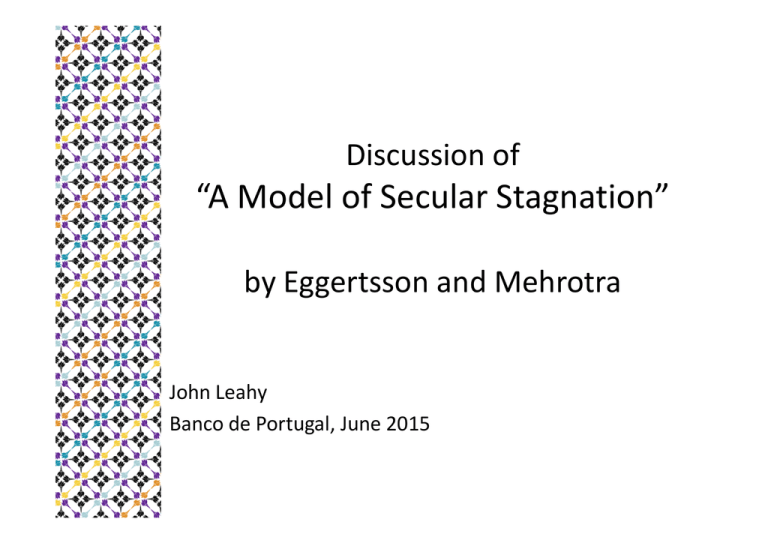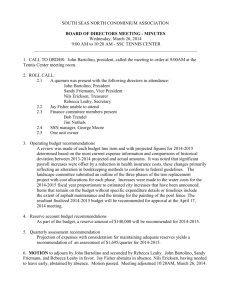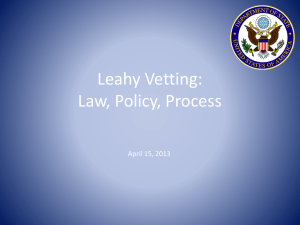“A Model of Secular Stagnation” Discussion of by Eggertsson and Mehrotra John Leahy
advertisement

Discussion of “A Model of Secular Stagnation” by Eggertsson and Mehrotra John Leahy Banco de Portugal, June 2015 Secular Stagnation Definition A permanent reduction in the level of output below its frictionless level brought about by the combination of • a negative natural rate of interest • a low inflation target • the zero lower bound on nominal interest rates • downward sticky wages John Leahy Secular Stagnation i>0 and r~r* i=0 and r > r*<0 John Leahy Similar to Output Growth in Asian Crisis 15 10 percent 5 0 1989 1991 1993 1995 1997 1999 2001 2003 2005 -5 -10 -15 Indonesia Source: IMF Korea John Leahy Thailand 4 The Model: Aggregate Demand John Leahy Aggregate Demand Y John Leahy The Model: Aggregate Supply John Leahy Aggregate Supply Y John Leahy Equilibrium 1 2 Y 3 = “secular stagnation” John Leahy Comment 1 The result that output is below its natural rate depends mainly on the supply side • A vertical supply curve would pin down output Requires 1) Persistent deflation (we still have inflation) 2) Wage bargaining that never adjusts to persistent deflation Simple Policy Prescription: Positive inflation John Leahy Comment 2 The “problem” on the demand side is that the young are not borrowing enough • • • Deflation leads to high real interest rates which reduce borrowers ability to borrow so that savers have no place to save The only way for the loanable funds market to clear is for income to fall* Note again need deflation so that interest rate is high and borrowing low. Natural extensions would add more savings vehicles: • • • • • Capital Land Money Government debt Foreign assets Policy prescription: Create savings vehicles or transfer income to young * One could imagine other equilibria in which savers continue to earn income but that the loanable funds market is rationed. John Leahy Comment 3 I had a flashback to the debate between Keynes and Pigou This debate was never going to be answered solely by abstract theory • Need for quantitative models that fit data John Leahy Permanent Slump or Slow Convergence John Leahy Permanent Slump or Slow Convergence John Leahy Permanent Slump or Slow Convergence John Leahy





